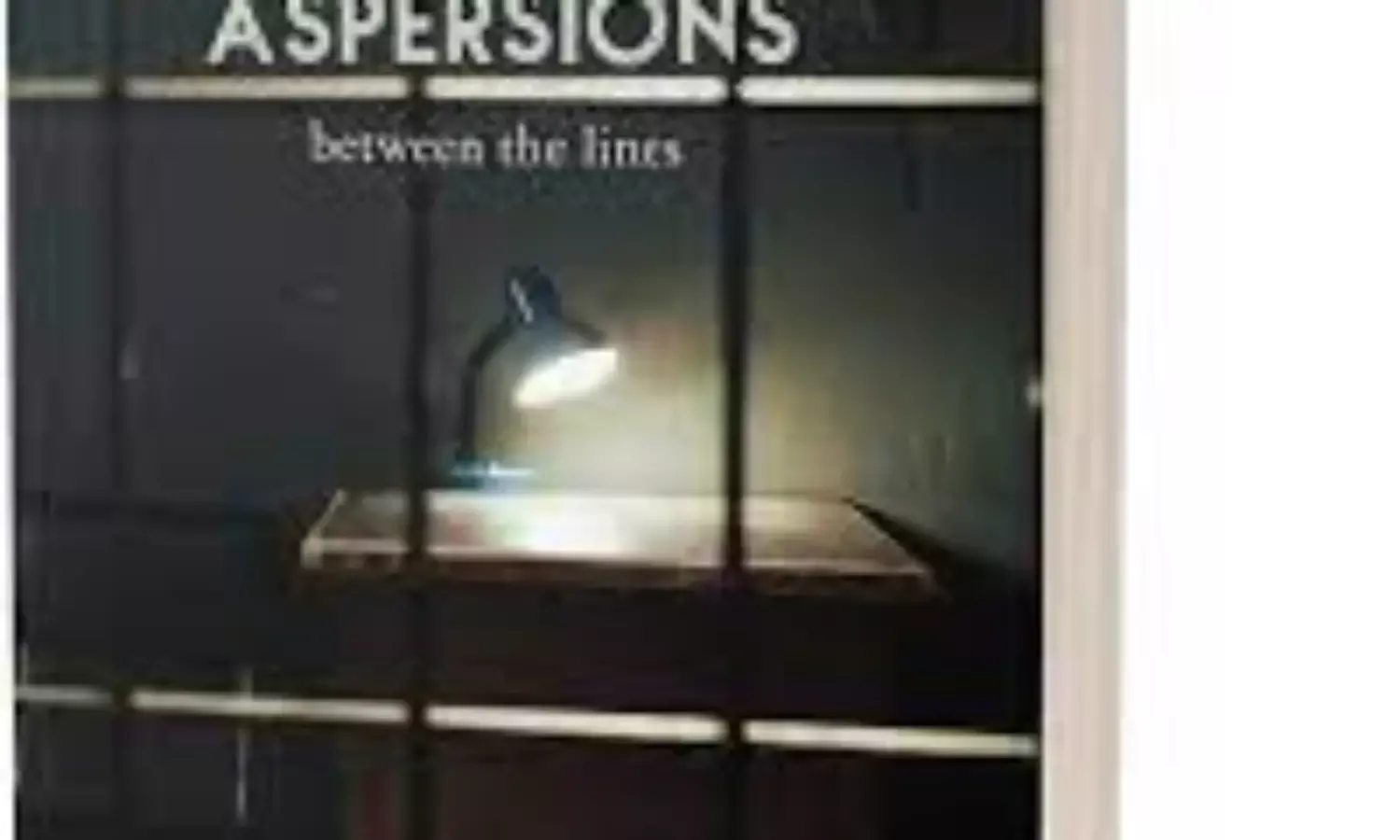Journalism- Aspersions and Aspirations
Rathin Das’ book ‘Aspersions Between The Lines’ is a must read insiders’ account

Just like any other profession journalism too is a mix of all sorts of characters. It is made up of a range of honest, upright, corrupt, sycophants, and mischievous people. The profession also has various shades of black, white and grey. But very few journalists have the spine and ability to bring this out in the society, even as they keep on writing about the goings on in the other social domains.
Veteran journalist Rathin Das has made a brave attempt to bring out the trials and travails of journalists in their tryst with reality camouflaged by claims and denials. His self published book ‘Aspersions Between The Lines’, is an easy, engrossing read that is pretty diverse in its contents.
The diversity of contents does not come as a surprise given the fact that Das has been a journalist for over four decades. He has written for diverse platforms including prominent national dailies and portals during his stints in the national capital, Kerala and Gujarat. He has also reported for radio networks.
According to the author, “Though fiction, this book deals with minor misconceptions, innocuous mistakes, honest misunderstandings and intentional mischief of journalists during their journey through the myriad of complexities in Indian society.
“Corruption among journalists is only a tip that confirms the existence of the iceberg in society, business and corridors of power involving bureaucracy and politicians. There are instances where media houses have deliberately appointed proven dubious journalists to key posts precisely to reap benefits of their corrupt ways.”
Das added that, “many journalists succeed in resisting the temptations and pressures while some others succumb to their media group’s nexus with business houses, real estate dealers and political forces.”
All this has been brought out in the stories, often autobiographical, that comprise the 223 page book. There is humour, satire and dark realities reflected in these stories.
Such books are important as they bring out through fiction realities that cannot be otherwise reported in black and white. These books also capture the nuances that are difficult to communicate in any other way.
The author is well aware of rubbing people on the wrong side without naming them. He brings out the other side of the profession which also includes the stupidities of journalists.
In an amusing anecdote in the story ‘Stupidity, My Own’ he narrates how he had taken a fancy to consuming ‘Ghaslette’ during a visit to Indore thinking that it was a distant cousin of cutlet or chocolate. It was only some years later that he got to know that ‘Ghaslette’ is the local name for kerosene.
Similarly, he narrates an anecdote from Thiruvananthapuram where he mistook a crowd of women and children waiting at a parking space outside an amphitheatre to be fans of classical dance. It was later that he got to know that they were actually waiting for the retail distribution van of Kerala Civil Supplies Corporation.
Das’ sensitivity towards the marginalised sections of the society gets reflected in the stories around Gujarat. It is pertinent to know that he has been covering the state since the outbreak of plague in Surat in 1994.
He covered in detail the Godhra train burning incident and the anti-Muslim pogrom that followed the state whose model is being marketed across the country. Several of his news reports led to din in the Parliament at that time.
Besides writing news reports he was also keenly observing the social and psychological changes that were taking place in the aftermath of that madness.
In one of his stories, he strikingly brings out the fear in the minds of the Muslim community to burst crackers to celebrate occasions like a wedding in the family since the occasion coincided with an Indo-Pak cricket match and lest they be construed as Pakistan supporters if India lost.
In the same story he has brilliantly brought out the fact that the Muslims at that time had started refraining from getting 786 as the registration number for their vehicles. This was otherwise the most sought after number in the community because of its religious connotation. Das had actually done a news report on the issue as well.
Religious symbols have been playing out in different ways in areas that have witnessed communal polarisation and violence. In another story, the author has described how a Muslim driver’s presence of mind with regards to a skull cap helps him save his Hindu passenger’s life in a troubled ghetto.
The author has in a subtle way highlighted how it is necessary for journalists whether working in the field or on the desk to be well aware of geomorphology and climatology of a region on which a news report is being carried. He has written a story on how a sub editor assumed the survivors of a bus that had fallen into a river in Gujarat during the summer had swam to safety while those killed had drowned. It was a cross check with the reporter that revealed that the riverbed was dry and the deaths were the result of head and neck injuries.
In another story he has brought out how things get misunderstood and why it is important to ask and ask again from the people about things on which you have doubts. There is a story of a reporter of a foreign publication getting misled into believing that the “Jai Bhim’ graffiti in a Dalit locality after a riot is the new found love of the community for muscle power symbolised by the character Bhim of the epic ‘Mahabharata’. In reality it was the community’s reverence towards the Father of the Indian Constitution Dr. Bhim Rao Ambedkar.



